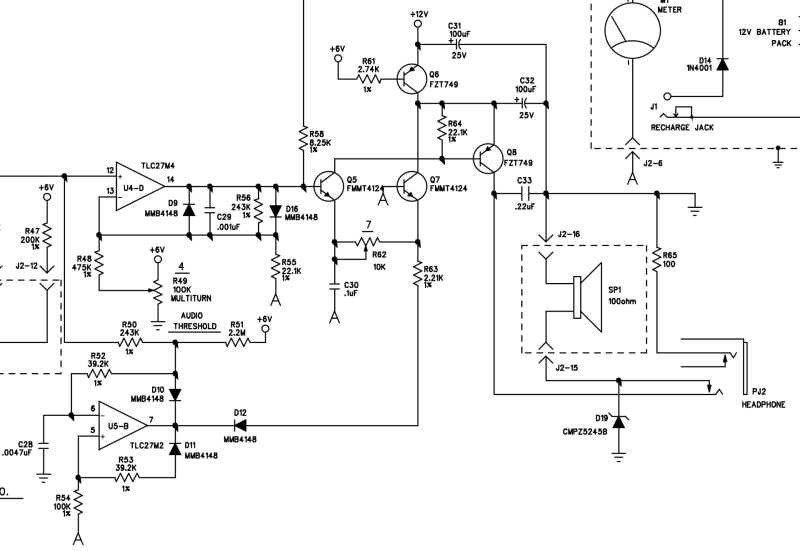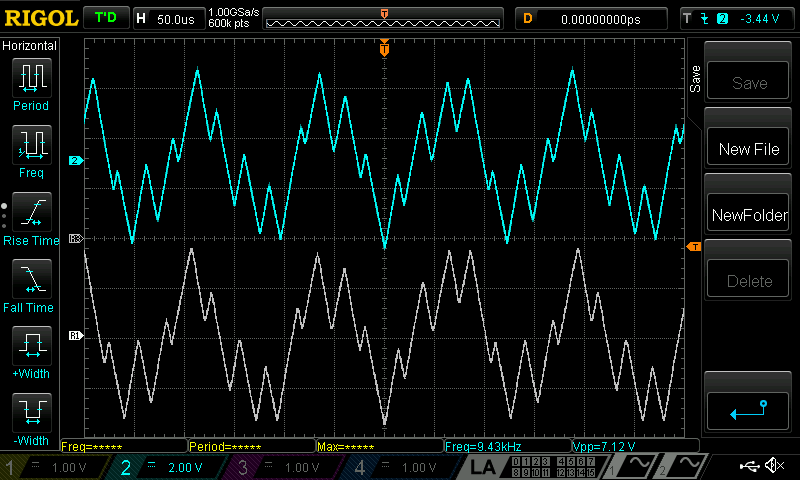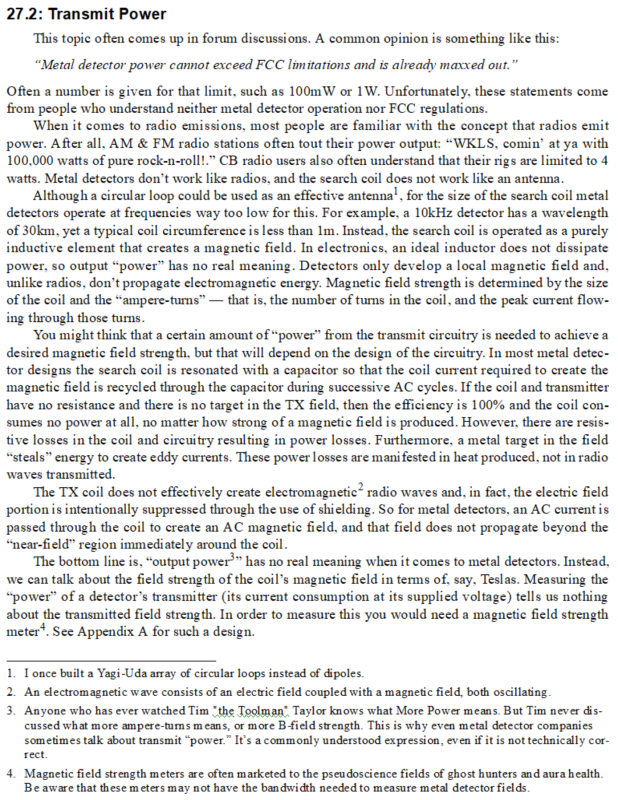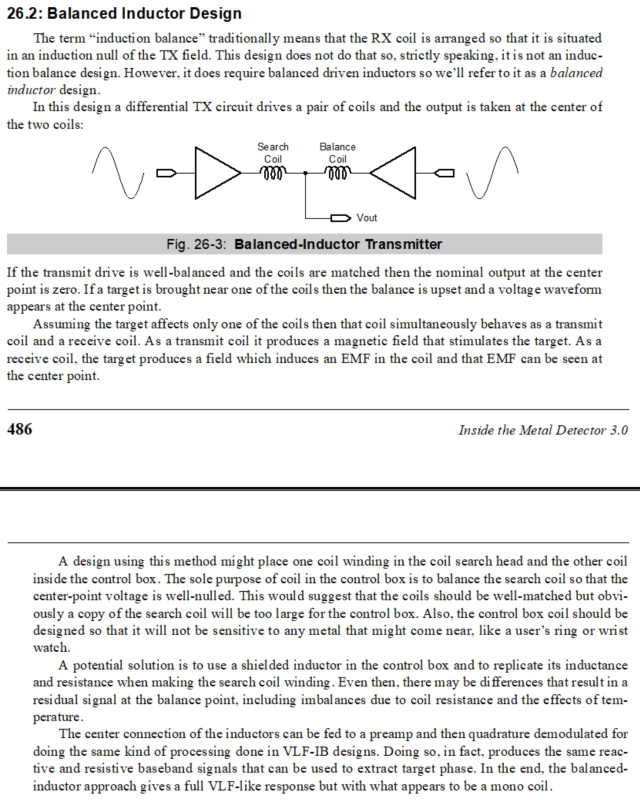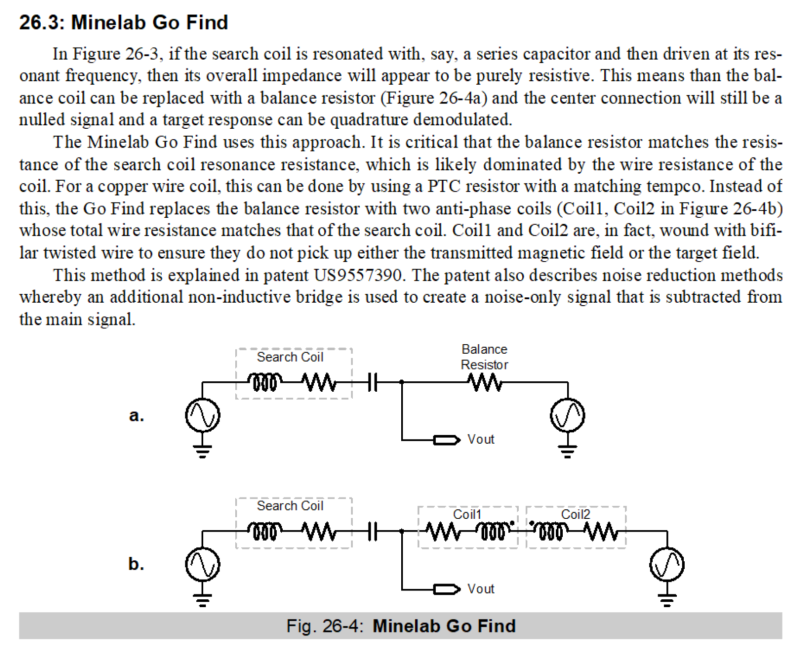-
Posts
576 -
Joined
-
Last visited
-
Days Won
5
Content Type
Forums
Detector Prospector Home
Detector Database
Downloads
Everything posted by Geotech
-
Pot value is correct, I suspect the wires are crossed. The rear lug (where the gray wire is attached) is the wiper pin and should go to pin 2 on the PCB. Most likely he assumed the middle lug is the wiper pin.
-
The best place is next to the current GB pot. Personally, I would move the Gain pot over to the right side where the White's logo is and place the Coarse GB pot where the Gain pot was. Then make the current GB pot the Fine control. The reason is that it's preferable to have the GB on/off switch on the Fine control so the Coarse control stays in place, makes switching between AM & GB a bit easier. Even better than that is to break out the GB on/off to a separate toggle switch. If you never find yourself switching between AM & GB then none of this matters. For the pot you want a 10k linear taper with a 1/4" (6mm) shaft. They are everywhere. Here is a place to get them cheap but shipping will probably un-cheap them: https://www.futurlec.com/PotRot.shtml Which one you get depends on what knob you want to put on it. If you have free Prime shipping then Amazon has them reasonably priced, though you'll have to buy several. Plus side, some options include wires & knobs. Finally, if you are passing through Republic, WA I'll give it to you for free.
-
Yes, same thing will work. Try to wire it with coax if you can, for noise reasons. A chopped-up S-video cable works nicely. If not, twist the wires.
-
Yes, that's what I meant. A "true" SF detector has a narrowband TX (namely, a sinusoid) and a narrowband RX. The SF modes on SMF detectors continue with a wideband TX (namely, a square wave) and a wideband RX. In fact, because the SF mode on an SMF is a square wave, you could demodulate its 3rd harmonic and do salt cancellation, making what seems to be an SF mode hunt in salt like an SMF. This is exactly what the X-Terra Pro does (which is "SF" only), as did all the old CZs. 5k to 10k or 10k to 15k are not slight changes, they are pretty major. Most EMI gets "aliased" into the baseband and both 5kHz and 10kHz ends up aliasing 60Hz to the same 20Hz offset. As you go up in frequency (20k, 40k) the alias frequency is still 20Hz but there is also a natural reduction in amplitude (something called the "sinc rolloff") so that is what's helping. A slight change is 10k to 10.05k, and 10.05kHz aliases 60Hz to 30Hz, which is just a little farther out in the baseband filter and may help. This is why noise channel offsets are very small, you are only wanting to move the aliased frequency in small amounts. I would almost label that a "fact."
- 21 replies
-
- 3
-

-
- advice and tips
- detector tech
-
(and 1 more)
Tagged with:
-
Powerline EMI is narrow-band and is usually the easiest to deal with. However, the powerline frequency varies a little bit over time so you might tune out powerline EMI, only to find it comes back an hour later. Wideband EMI is much harder to deal with. Electric fences and dog "invisible fences" are really bad, as they usually use a brief impulse of energy, not unlike a PI detector. Then there is the detector itself. A multi-freq design has a wideband front-end which lets in everything, and makes getting rid of it difficult. A (true) single freq design has a narrowband front-end which does a good job of minimizing wideband EMI, so getting rid of it is not as difficult.
- 21 replies
-
- 5
-

-
- advice and tips
- detector tech
-
(and 1 more)
Tagged with:
-
The TX frequencies are proportionately adjusted by some small amount. For example, Park mode on the Equinox nominally runs at 2.6/7.8/39 kHz which is a ratio of 1:3:15. Let's say that the next channel up from that is a 2% shift; the frequencies will now be 2.652/7.956/39.78 kHz, which is still a ratio of 1:3:15. That's what I mean by "proportionately adjusted," the ratios never change. The total adjustment range is usually small, no more than maybe +/-10%, which isn't enough to cause any major difference in performance. Here is a scope probe of the mid-channel waveform (bottom) and the highest channel waveform (top) for the Eq800. You can see that they "look" identical except that the high channel is slightly compressed, by 2.5%. It's like an accordion bellows. I have no idea what the D2 does in its frequency limit feature, I don't have one to test.
- 21 replies
-
- 6
-

-

-
- advice and tips
- detector tech
-
(and 1 more)
Tagged with:
-

Fisher F19 Ground Balance Question
Geotech replied to Rick N. MI's topic in First Texas - Bounty Hunter, Fisher & Teknetics
Rick is correct, and there is an explanation. If you are in mineralized ground then it is important to have a correct GB to minimize ground noise. If the ground is not mineralized, then you won't hear ground noise no matter the GB setting. In this case, if you set the GB negative there are some designs that will produce a slight increase in target sensitivity. These are designs that create a "G channel" by adding a slight amount of X channel to the R channel; G = R + kX and we select k so that G = 0 for perfect GB. G then becomes our target indicator, since anything other than G=0 means we have a target. But if there is no mineralization, then by increasing the factor k we are adding some X target signal to the R target signal. This gives a stronger overall target signal, and it benefits high conductors more than low conductors. If there is a slight amount of ground mineralization, then this setting will make it respond negatively as you lower the coil to the ground. However, even with some nulling effect from slight mineralization you might find that this tweak still gives more depth. Some people run the GB slightly positive on the theory that it avoids the nulling effect you get with a slightly negative GB. However, either a slightly positive or a slightly negative GB produces the same nulling effect, the former as the coil nears the ground and the latter as the coil recedes. Since ground is not always even, and coil sweeps aren't either, I've always considered a tight GB setting to be preferable, unless the ground is weak enough that the whole explanation above prevails. Sorry, this is one of those things that really needs pictures. -

Transferring Old Detector Graphics... (update)
Geotech replied to Compass's topic in Metal Detector Advice & Comparisons
Todd Marshall at Centerville West probably has new decals. I know the Service Dept had them when I was at White's, and Todd took everything with him. -
That would transform the slim, lightweight Legend into a big, bulky detector. Besides, the Legend (and all the other newer models) are 100% DSP so there is no hardware to upgrade. And the firmware is upgradeable, so you could argue that the Legend already supports plug-in upgrades. The original concept for the White's V3 was to start it out as a more basic detector (far fewer options) and sell progressive upgrades at, say $99. The upgrades would already be programmed in, so for $99 you get a passcode that unlocks the next level of features. The brass didn't like that, so it was released with everything. However, in the VX3 model this concept was sneaked in, though it was never implemented. So a VX3 could be upgraded to a V3i, if the computer that generated the passcodes hadn't been trashed. I think this model of upgradeability is a bit harder to swallow, in that you've already bought the detector with all the features, you just can't use them until you pay extra. I know the auto industry is doing this, and I don't care for it a bit. Many years ago, in the last-gasp dying days of film cameras, I owned a Minolta 7000i. It had plug-in modules (about the size of a normal SD card) that could add modes and features to the camera. That would be the most likely path for a "modular metal detector" these days. But with the Legend, what would you add that's not already there? And would you pay extra for that?
-
Yes, it covers the basics reasonably well.
-
Except for the first 200 units, the TDI also used a micro. A micro is simpler and cheaper. I wrote the code for both and recently reconstructed the code to do some experimental work.
-

Need Schematic For Yukon 77b Metal Detector
Geotech replied to case310350's topic in Compass, D-Tex, Tesoro, Etc.
Compass77bAT.pdf -
I don't know if Don is still making shells, but he's the only one I know of to try. Get some microballoons to mix in the epoxy, it will make it much lighter. I bought a bag somewhere, maybe AliExpress.
-
Try Don Bowers (dfbowers) via the Geotech forums. If you epoxy-pour the coil you really don't need a bottom.
-
Might be the battery contacts. The C-cell pack contacts 2 metal fingers inside the box, if those metal fingers get bent backwards the battery pack will no longer touch. Probably need to open the main box and (gently) bend the fingers closer to the battery compartment. Might also be the keypad flex connector. You can open the display pod, find the flex connector, and wiggle it in the receptacle. Often that will freshen up the contact. The keypads eventually wear out, I know that years ago White's ran out of spares. They talked about getting another batch made but don't recall if they did.
-

Equinox 600 Vs Fisher F44 & F70
Geotech replied to michaelgolden's topic in Metal Detector Advice & Comparisons
See footnote #3. What ML probably means is that the Manticore has a 50% stronger TX field. I give ML a pass on this because what they are using is common terminology. -

Equinox 600 Vs Fisher F44 & F70
Geotech replied to michaelgolden's topic in Metal Detector Advice & Comparisons
While much of what you've posted has merit, this does not. Not even for CBs, which are limited to 4W. Here is an excerpt from ITMD-3: ITMD also has a section that explains the actual FCC regs that apply to metal detectors but it spans 3 pages so I won't post it. But it explains the real emissions limits that detectors face, and that those limits are not a factor. If you want to know what they are, look up the FCC report for a recent detector (I think there was a thread here that talked about the Manticore) and it will specify every FCC reg that was applied. I've personally put several metal detectors through FCC testing so I know for certain what the requirements are. -
-
-
Twisting a pair of wires does cancel external EMI, it also cancels the outgoing magnetic field. In this case the leads are a very tiny part of a large coil which is highly susceptible to EMI and also generates a large magnetic field, so I doubt whether the wires are twisted or not makes any difference whatsoever. Induced EMI is proportional to the area-turns (area of the coil times the number of turns of wire) which likely favors the small coil.
-

Masked Non-ferrous Vs Iron Falsing
Geotech replied to HardPack's topic in Metal Detector Advice & Comparisons
His vector analyses are very much on the right track but some of his specifics are off. But a pretty decent job overall. -
Makes no sense. C31 is simply a cap directly across the battery. If it explodes then it's either backwards, (way) too low of a voltage rating, or the circuit is seriously screwed up. U2 is a "4316" quad switch. Possibly a CD4316, but 74HC4316 and 74HCT4316 might also work. If this part is cooked, then you've got some super major problems.
-

Long Distance Gold Detector
Geotech replied to mssw07's topic in Metal Detector Advice & Comparisons
I suggest you buy the most expensive long-range gold detector you can afford. In fact, buy the most expensive even if you can't afford it. Sell everything you own, mortgage the house, borrow money from family, friends, Vinny the loan shark. Then, when you find out the thing doesn't work, you'll have a painful education but one you'll never forget.


